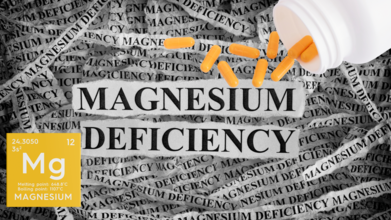- Health Conditions A-Z
- Health & Wellness
- Nutrition
- Fitness
- Health News
- Ayurveda
- Videos
- Medicine A-Z
- Parenting
- Web Stories
What Are The Different Kinds Of Ultrasounds?

Credits: Canva
Ultrasound uses high-frequency sound waves to create real-time images of internal organs or other soft tissues. Unlike X-rays, ultrasound imaging does not use any radiation and thus it is a safer way for healthcare providers to see what is going on inside your body.
How Does It Work?
A device called a transducer or probe is used where it is placed over the area being examined or sometimes within a body cavity. To help the ultrasound waves travel efficiently from the probe to the body, a thin layer of gel is applied to the skin.
The probe emits high-frequency sound waves that bounce off internal structures and return to the probe. These sound waves then get converted into electrical signals, which allows a computer to display real-time images on a nearby screen.
What Are The Different Types Of Ultrasounds?
There are mainly three categories:
- Pregnancy ultrasound or prenatal ultrasound
- Diagnostic ultrasound
- Ultrasound guidance for procedures
Pregnancy Ultrasound
It is used to monitor the mother and fetus throughout pregnancy. It an confirm pregnancy and estimate gestational age, monitor fetal growth, position, and movement, check fetal heart rate, screen for congenital conditions, such as those affecting the brain, spinal cord, or heart, and it can also measure the amount of amniotic fluid surrounding the fetus.
It is usually performed at around 20 weeks to track fetal development.
- Diagnostic Ultrasound: It helps the healthcare provider examine specific areas of the body to know for any symptoms like unexplained pain, lumps, or unusual blood test results. In most cases, the technician places the probe on the skin, but sometimes internal ultrasounds, such as transvaginal or transrectal.
- Abdominal ultrasound: helps identify causes of abdominal pain
- Kidney (renal) ultrasound: evaluates kidneys for cysts or tumours
- Breast ultrasound: identifies any lumps or cysts in the breast, in case they are undetected in a mammogram
- Doppler ultrasound: measures blood flow through arteries and veins
- Pelvic ultrasound: assesses pelvic organs like bladder, prostate, and reproductive structures
- Thyroid ultrasound: measures the size of the thyroid and checks for nodules
- Transrectal ultrasound: used to examine the prostate and nearby tissues
This Thing In Your Hair Could Heal Your Tooth Enamel And Keep Them Pearly White

Credits: Canva
The search for stronger, longer-lasting teeth has been a cornerstone of dentistry. From the widespread use of fluoride to modern resin fillings, the field has steadily advanced but has never managed to replicate the extraordinary natural material that coats our teeth: enamel. Once it erodes, it’s gone forever—or at least, that’s what we’ve always believed.
Now, researchers from King’s College London are challenging this assumption with an unusual but promising source: keratin, the protein that makes up human hair and animal wool. Their findings suggest that something as simple as a haircut could one day contribute to regenerating tooth enamel and transforming oral care.
Why Tooth Enamel Is Irreplaceable?
Tooth enamel may look simple—a hard, shiny coating that gives teeth their strength and luster—but it is one of the most remarkable substances in the human body. Harder than bone, enamel is designed to withstand decades of grinding, chewing, and exposure to temperature extremes.
Unlike bone, however, enamel is non-living. It lacks the cells and blood supply necessary to heal itself. That’s why a small cavity or a patch of erosion, if left untreated, can become a permanent problem. Once enamel wears away, it exposes dentin, a softer layer that appears yellow and is far more vulnerable to decay.
The impact of enamel erosion is staggering. Dental decay weakens a tooth’s strength by up to 95 percent, leaving it prone to fractures, sensitivity, and eventually loss. According to the Global Burden of Disease 2019, untreated cavities affect an estimated two billion people worldwide, making dental decay the most common disease on the planet.
What Are The Limitations of Current Dental Treatments?
Modern dentistry has developed tools to slow or mask the damage caused by enamel loss, but not to restore it. Fluoride can strengthen remaining enamel and delay erosion, but it cannot rebuild what has already vanished. Resin-based fillings, while effective in patching cavities, are no match for the natural durability and resilience of enamel. Worse still, resins can contain toxic compounds and lack the long-term strength of natural tooth material.
The result is a cycle of temporary fixes. Cavities are filled, fillings fail, larger restorations follow, and eventually, teeth are lost. As populations age and diets grow increasingly sugar-heavy, the financial and health burden of this cycle is enormous. The challenge has been clear: how can dentistry move beyond patchwork solutions to true biological regeneration?
How Does A Hair Protein Improve Your Teeth?
The answer may lie in keratin, the fibrous protein best known for forming hair, nails, and wool. In their study, researchers at King’s College London extracted keratin from sheep wool and introduced it into a solution designed to mimic human saliva. To their surprise, the keratin didn’t simply dissolve or degrade—it began pulling minerals from the artificial saliva and assembling them into structures that closely resembled natural tooth enamel.
The regenerated material didn’t just look like enamel under a microscope; it behaved like enamel, too. It demonstrated the same stiffness, resistance to wear, and pearly shine that makes natural teeth so resilient.
What’s more, the team discovered that mixing different types of keratin produced superior results. By layering proteins in a hierarchical structure—similar to Russian nesting dolls—they achieved enamel-like material with remarkable strength, durability, and resistance to various forms of degradation.
Attempts to regrow enamel are not new. Previous efforts have focused on peptides, stem cells, and synthetic biomaterials. Yet these approaches have often stumbled over practical barriers, from poor bioavailability to the inability to repair deep cavities.
Keratin may offer a way around these roadblocks. It is abundant, renewable, and can be sourced from waste materials like wool or hair, aligning with a circular economy model. Unlike synthetic resins, keratin-based materials are biocompatible and less likely to trigger toxicity or rejection.
As Dr. Sherif Elsharkawy, the study’s senior author, put it: “We are entering an exciting era where biotechnology allows us to not just treat symptoms but restore biological function using the body’s own materials.”
While the concept might sound futuristic, researchers believe keratin-based enamel boosters could be available within two to three years. Potential applications range from everyday products like toothpaste to more targeted dental gels applied by clinicians.
Imagine visiting your dentist not for a drill-and-fill appointment but for a keratin “varnish” that coats your teeth, hardening over time into new enamel. Or brushing daily with a toothpaste that rebuilds microscopic enamel loss before it develops into a cavity.
If successful, these products could revolutionize dental care by shifting the focus from repair to regeneration.
The implications stretch far beyond whiter smiles. Dental decay is a leading cause of pain, disability, and lost productivity worldwide, especially in low-resource settings where access to dental care is limited. A safe, affordable way to restore enamel could dramatically reduce the burden of oral disease across populations.
The study, published in Advanced Healthcare Materials, is still in early stages. Researchers must test keratin-based enamel in real-world conditions, ensuring it can withstand the stresses of chewing, exposure to bacteria, and years of daily use. Clinical trials will be critical before any commercial rollout.
Still, the concept is generating excitement as co-author Elsharkawy noted, “With further development and the right industry partnerships, we may soon be growing stronger, healthier smiles from something as simple as a haircut.”
Indonesia Launches Mass Vaccination Drive After Deadly Measles Outbreak

Credits: Canva
Hundreds of children lined up at health centers in East Java on Monday as Indonesia began a mass vaccination drive to curb a deadly measles outbreak that has claimed 17 lives in recent months. The campaign, which targets tens of thousands of young children, comes amid concerns over low vaccination coverage in the world’s fourth most populous nation.
Outbreak Hits East Java Hard
According to the Sumenep District Health Agency, more than 2,000 children have been infected with measles in East Java over the past eight months. Sixteen of the 17 deaths were reported in Sumenep district, where officials revealed that none of the patients had received complete measles immunization.
Deputy chief of Sumenep district Imam Hasyim urged parents to ensure their children receive the shots. “Otherwise, this disease, measles, will spread further among our children. It will be even more fatal in the future,” he said. Authorities are aiming to vaccinate 78,000 children aged between nine months and six years as part of the emergency drive.
What Is Measles?
Measles is a highly contagious viral disease that spreads through coughing, sneezing, or direct contact with an infected person. Symptoms often start with a high fever, cough, runny nose, and red eyes, followed by a distinctive red rash that spreads across the body.
While measles may seem like a childhood illness, it can cause severe complications such as pneumonia, brain inflammation, blindness, and even death. The World Health Organization (WHO) warns that measles is among the leading causes of death among young children globally, despite the availability of a safe and effective vaccine.
Past Outbreaks in Indonesia
This is not Indonesia’s first struggle with measles outbreaks. In 2018, the eastern province of Papua experienced a major outbreak that killed dozens. At the time, vaccination efforts faced hurdles when the Indonesian Ulema Council announced that the measles-rubella vaccine contained pork derivatives. While authorities permitted temporary use of the vaccine made by India’s Serum Institute, vaccination rates dropped as debates over halal certification grew.
Last year, only 72% of Indonesia’s 22 million children under the age of five received the measles vaccine, according to government statistics. In some provinces, coverage fell below 50%, far short of the 95% rate needed to prevent outbreaks.
Global Concern Over Measles Resurgence
The outbreak in Indonesia mirrors a troubling global trend. WHO reported that 60 countries experienced major measles outbreaks in 2023. Worldwide, about 84% of children received their first dose of the vaccine and 76% got the recommended second dose. Public health experts, however, stress that vaccination rates must be significantly higher to achieve herd immunity.
In the United States, the Centers for Disease Control and Prevention (CDC) recently reported the highest number of measles cases in over 30 years. Similar outbreaks have been recorded across Europe, Africa, and Latin America, underscoring how quickly the virus can spread when immunization coverage declines.
Authorities Call for Collective Action
Indonesian officials have appealed to local leaders, community groups, and religious authorities to encourage participation in the vaccination campaign. Given the sensitivity around vaccine ingredients in the past, their role is considered vital in restoring public trust.
Health experts stress that strengthening immunization programs is critical for Indonesia’s future. With millions of children still vulnerable, they warn that outbreaks will continue unless vaccine coverage improves substantially.
As the latest campaign rolls out, parents like those in Sumenep are being urged to prioritize their children’s protection. For many, this mass drive could mean the difference between life and death.
The Most Dangerous Sign Your Body Is Starving for Magnesium

Credits: Canva
People pop supplements to sleep better, soothe their nerves, or stop those calf cramps. But what if we told you that the most dangerous consequence of low magnesium is not about tossing and turning or having twitchy legs at all?
According to nutritionist Dr Eric Berg, also known as the Knowledge Doc, the real red flag is something far scarier and far more life-altering.
It’s Not About Cramps, Stress, or Palpitations
When you think of magnesium deficiency, the usual problems that come to mind are cramping muscles, restless nights, and that fluttery feeling in your chest. Sure, they are uncomfortable. But as Dr. Eric Berg explains:
“The most dangerous symptom of a magnesium deficiency is not muscle cramps, it's not anxiety or insomnia, and it's not heart palpitations. Those are warning signs of the silent red flag behind 80% of all chronic diseases. If you ignore it, it won't just disrupt your health; it will literally cause disease because it's at the heart of so many health problems.”
Then, what is this “silent red flag”? According to Dr. Berg:
“The most dangerous symptom of a magnesium deficiency is mitochondrial dysfunction. It's impossible for your mitochondria to make energy without magnesium, and most chronic diseases start with dysfunctional mitochondria.”
Mitochondria are the microscopic “batteries” inside your cells. They’re the power stations that keep your heart pumping, your brain firing, and your muscles moving. Take magnesium out of the equation, and these little energy factories can’t run. Instead of fueling you, they fizzle out, and that’s when disease creeps in.
From Tired Cells to Tired You
When your mitochondria don’t get enough magnesium, it leads to fatigue, brain fog, and slow recovery from workouts, which are just the tip of the iceberg.
But as Dr. Berg says, mitochondrial dysfunction isn’t just about feeling drained; it’s linked to heavy hitters like cancer, Alzheimer’s, Parkinson’s, type 2 diabetes, and high blood pressure. That means something as “simple” as a mineral deficiency could be a silent trigger for some of the most feared diseases of our time.
Are You Missing the Signs?
Magnesium deficiency is alarmingly common, thanks to modern diets and stress-filled lifestyles. Coffee, alcohol, processed foods, and even certain medications can quietly deplete your magnesium reserves. While you might brush off cramps or poor sleep as minor annoyances, they could actually be early SOS signals from your mitochondria.
It’s easy to overlook because the symptoms feel ordinary. Who hasn’t had a bad night’s sleep, felt stressed, or battled brain fog? But if these patterns keep repeating, they may be pointing to something bigger beneath the surface.
What You Can Do About It
Unlike complex medical interventions, supporting your mitochondria can start on your plate. Dark leafy greens, nuts, seeds, avocados, and even good-quality dark chocolate are all magnesium-rich options.
Simple lifestyle tweaks, like cutting down on processed foods, managing stress, and keeping caffeine and alcohol in check, also help preserve the magnesium you do have. For those with significant deficiencies, supplementation may be worth discussing with a healthcare provider.
© 2024 Bennett, Coleman & Company Limited

